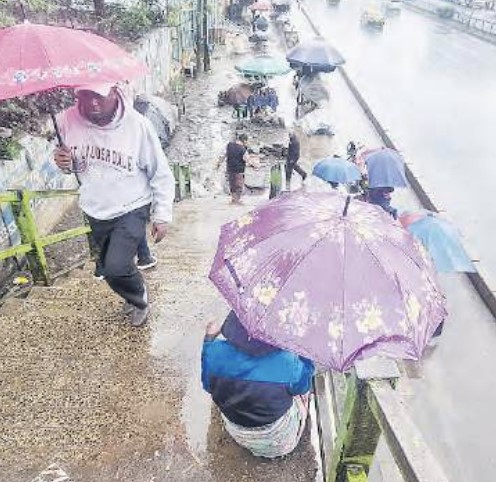Heavy rains to hit parts of Kenya Thursday – Met
The rainfall is likely to intensify to more than 30mm in 24hrs on Friday.
The rains may improve next year’s harvests from the current season
In Summary

Good news to farmers and no-so good news to those planning outdoor activities such as graduation parties this week – heavy rainfall will continue into the weekend.
The weatherman said the rains will be especially heavy in the entire western Kenya, including Turkana and Samburu counties, until Saturday. Central Kenya, including Nairobi, will also be wet and gloomy throughout this week.
“Isolated heavy rainfall events are likely to occur over some parts of these regions during the first half of the forecast period,” said Dr David Gikungu, the director of the Kenya Meteorological Services.
“Rainfall is expected to continue over the Highlands East and West of the Rift Valley, the Lake Victoria Basin, the Rift Valley, the South-eastern lowlands, the Coast, North-western and North-eastern Kenya,” he added.
The rains will be heaviest in Siaya, Kisumu, Homabay, Migori, Kisii, Nyamira, Trans Nzoia, Baringo, Uasin Gishu, Elgeyo-Marakwet, Nandi, Nakuru, Narok, Kericho, Bomet, Kakamega, Vihiga, Bungoma, Busia and West Pokot counties.
In Central Kenya, which comprises Nyandarua, Laikipia, Nyeri, Kirinyaga, Murang’a, Kiambu, Meru, Embu, Tharaka and Nairobi, rains will only begin to reduce on Saturday.
A similar situation is expected in Kitui, Makueni, Machakos, Kajiado and Taita Taveta, as well as inland parts of Tana River.
North-eastern counties of Marsabit, Mandera, Wajir, Garissa and Isiolo will also be wet until Saturday.
Dr Gikungu said the Coast (Mombasa, Kilifi, Lamu and Kwale as well as coastal parts of Tana River) will mostly have showers over a few places.
The rains may improve next year’s harvests from the current season.
A recent UN report had predicted that acute food insecurity would increase in magnitude and severity in 22 countries and territories, including Kenya.
The Hunger Hotspots report called for urgent humanitarian action to save lives and livelihoods and prevent starvation and death in areas where acute hunger likely to worsen between November and May next year.
This is based on the outlook in Hunger Hotspots FAO WFP early warnings on acute food insecurity.
The report showed Kenya, Lesotho, Namibia and Niger have been added to the hunger hotspots category. Burkina Faso, Ethiopia, Malawi, Somalia, Zambia and Zimbabwe remain designated as hunger hotspots.
“The Sudan, Palestine, South Sudan, Haiti and Mali remain at the highest concern level.These are countries/territories with famine or risk of famine, or with populations already in catastrophe phase as per the Integrated Food Security Phase Classification,” the outlook showed.
“Chad, Lebanon, Myanmar, Mozambique, Nigeria, the Syrian Arab Republic and Yemen are classified as hotspots of very high concern, where large numbers of people are facing or are projected to face critical levels of acute food insecurity. This situation is driven by escalating factors that threaten to deepen already life-threatening conditions.”
The report focuses on severe and deteriorating hunger situations, but does not represent all countries/territories experiencing acute food insecurity.
The UN report indicated that conflict and armed violence continue to be the primary drivers of hunger by disrupting food systems, displacing populations and obstructing humanitarian access.
It further warned the spread of conflict, particularly in the Middle East, coupled with climate and economic stressors is pushing millions of people to the brink.
The report, ‘Hunger Hotspots–
FAO-WFP early warnings on acute
food insecurity’ was issued by the
UN Food and Agriculture Organisation and the UN World Food Programme.
The rainfall is likely to intensify to more than 30mm in 24hrs on Friday.